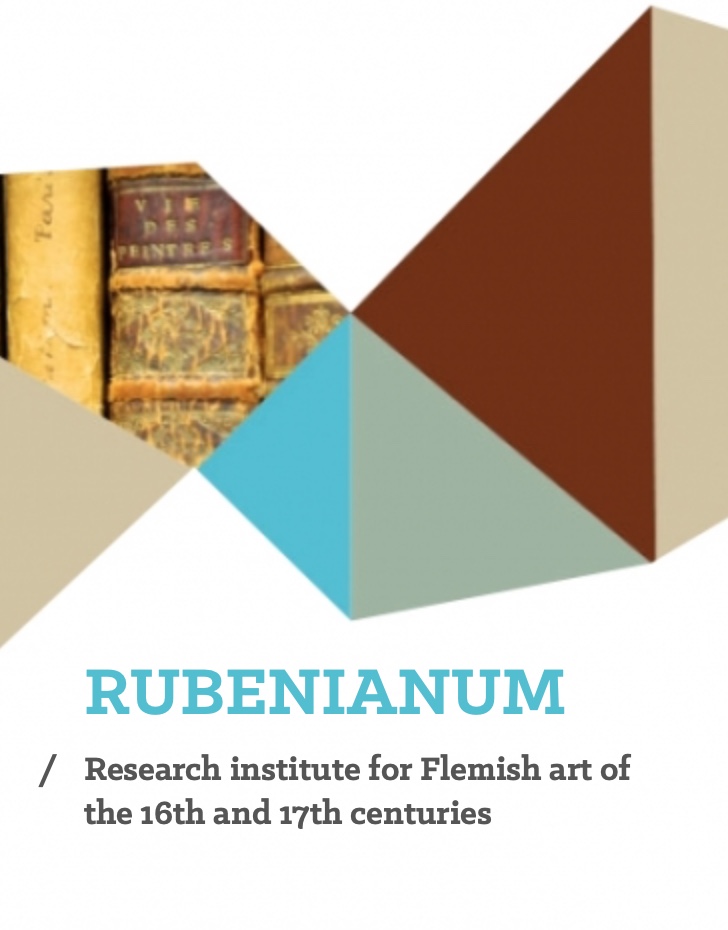
Rubens was one of the first Flemish masters who engaged with reproducibility to distribute his oeuvre to a broader audience. After his death, reproductions of his work gradually multiplied, as did the (private) initiatives to collect and publish his oeuvre in print. But it is not until 1877, that the number of reproductions grew exponentially. The festivities organized for his 300th birthday celebration had a significant impact on the quantitative expansion of reproductions, coinciding with a shift from graphic to photographic reproduction techniques.
The 1877 Rubens Year also initiated the scientific study of Rubens in Belgium with Max Rooses as a key figure. Rooses not only compiled the first illustrated oeuvre catalog on the artist in the following years (1886-1892), but also led the publicly funded ‘Committee to collect Rubens’ works in engraved and photographic reproduction’ (1880-1910). Both initiatives resonate with Ludwig Burchard’s creation of an extensive Rubens documentation, which since 1963 formed the basis of the collection of the Rubenianum. It is clear that the impact of mechanical reproducibility for the Rubens scholarship – and its ongoing efforts to encompass the vastness of his oeuvre – cannot be underestimated. The imagined site for such sum total of the artist’s production has always been the Rubens House in Antwerp. Already in 1877, photographer Joseph Maes envisioned a photographic encyclopedia of Rubens’ works to be exhibited in the artist’s former house, as if mechanical reproducibility would allow Rubens’ images to travel back to their point of origin, Rubens’ studio.
In 2024 the Rubenianum is moving its rich collection, joining the Rubens House’s new reception and experience center. With the fusion of the Rubenianum and the Rubens House in a single building, notably on the location where Rubens once kept his own library, Rubens’ pictorial universe thus finally comes home. Meanwhile the institution is in full transition, shelves are being emptied and boxes are piling up. But what exactly are we packing? What is the value of the thousands of reproductions in the form of prints, photographs, and slides in various formats, that have accumulated in the archive over the years? Can the seemingly endless sequence of books on Rubens and his contemporaries still tell us something new? And what space will these objects occupy in the future?
PROGRAM (all times are CET):
Thursday 9 February, 2023
De Cinema (Maarschalk Gerardstraat 4, Antwerp)
16:00 – Guided tour in Rubenianum (Kolveniersstraat 20, Antwerp)
19:00 – Introduction by Griet Bonne (Ghent University)
19:10 – Keynote lecture by Joseph Imorde (University of Siegen, Weissensee School of Art and Design Berlin)
‘How to Enjoy Reproductions: Some Historical Indications’
19:50- Q&A and Break
Film Screening: Rubens in the Cinematic Imagination
20:15 – Introduction by Steven Jacobs (Ghent University, University of Antwerp)
20:30 – René Huyghe and Jacques Jaujard, Rubens et son temps, 1938, 11’ / Paul Haesaerts and Henri Storck, Rubens, 1948, 61’ 17” / Grahame Weinbren, The Lions of Peter Paul Rubens, 2008, 10’
Q&A with Grahame Weinbren
Friday 10 February, 2023
Rubenianum (Kolveniersstraat 20, Antwerp)
10:00 – Welcome and introduction by Steven Jacobs (Ghent University, University of Antwerp)
(Un)packing the Rubenianum Library – Chair Sophie Suykens (Ghent University)
10:15 – Bert Watteeuw (Rubenianum & Rubens House): ‘Pictures of Pictures: Métapeinture and the Rubenianum’
10:30 – Elise Gacoms (Rubenianum & Rubens House): ‘Ro(o)ses all the Way: Rubens Research in Nineteenth-Century Antwerp‘.
The Double Logic of Image Perception: Centrifugal Circulation, Centripetal Visualization – Chair Griet Bonne (Ghent University)
11:15- Ellen Handy (City College of New York): ‘Unpacking My Shoebox Canon: Reproductions as Experience’
11:45 – Benjamin Binstock (independent researcher): ‘Oeuvres in the Age of Mechanical Reproducibility: Rubens, Rembrandt, Vermeer‘
12:15 – Lunch Break
The Liberation of the Arts: Advantageous Ventures for 19th-Century Photographer-Publishers – Chair Abigail Newman (Rubenianum & Rubens House , University of Antwerp, Ghent University)
14:00 – Justus Lange (Old Masters Gallery Kassel): ‘Rubens in the “Album der Kassler Gallerie” of 1867: Photographic Reproductions as Symbol of the Prussian Liberation of the Arts?’
14:30 – Franziska Lampe (Zentralinstitut für Kunstgeschichte, Munich): ‘Rubens, Petrus Paulus – On Photo Campaigns by the Publishing and Printing House Bruckmann and the Presence of the Flemish Artist’
15:15 – Sabine Pénot and Hanna Schneck (Kunsthistorisches Museum Vienna): ‘Josef Löwy’s Photography Campaign of the Habsburg Collection of Paintings in Vienna 1888-1891‘
16:15 – Coffee Break
Rubens Remediated: The Impact of Visual Strategies – Chair Joséphine Vandekerckhove (Ghent University)
16:45 – Elise Dupré (Ghent University): ‘Visual Argumentation in the Illustrated Art Book – Robert Druwé’s “Rubens, Naam- en Jaartaltechniek” (1944)’
17:15 – Griet Bonne (Ghent University): ‘Deposition of the “Deposition of Christ” – Tactics and Tactility of Cultural Heritage on Belgian Television (1958-1963)‘
17:45 – Concluding Remarks
More information and Registration: https://www.ugent.be/lw/nl/rubens
The symposium takes place on location. The presentations will not be live-streamed or recorded.
To attend the symposium, registration is required. The registration fee of 25 euros (20 euros for students) includes your film ticket for the film screening. Lunch is not provided.
Scientific Committee
Nils Büttner (Staatlichen Akademie der Bildenden Künste, Stuttgart)
Steven Jacobs (Ghent University, University of Antwerp)
Koenraad Jonckheere (Ghent University)
Elizabeth Mcgrath (University of London, Warburg Institute)
Abigail Newman (University of Antwerp, Rubenianum & Rubens House, Ghent University)
Lieneke Nijkamp (Rubenianum & Rubens House)
Bert Watteeuw (Rubenianum & Rubens House)
Acknowledgements
This symposium takes place in the context of Griet Bonne’s PhD-research Rubens in the Age of Mechanical Reproduction: Studies on Reproducibility between 1877 and 1977 (FWO Fellowship Fundamental Research) at the Department of Art History, Musicology and Theatre Studies of Ghent University. It is made possible with support from the Rubenianum, The Faculty of Arts and Philosophy at Ghent University and De Cinema.
You must be logged in to post a comment.